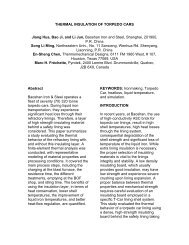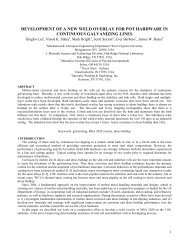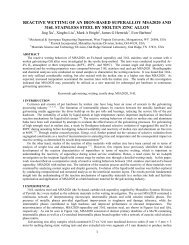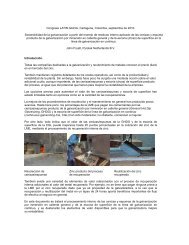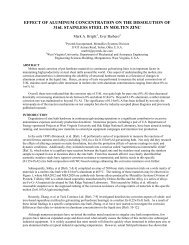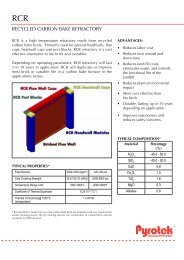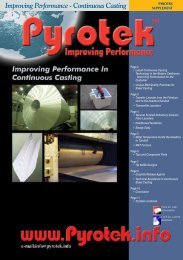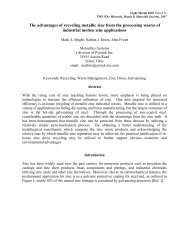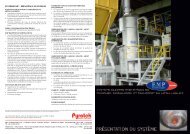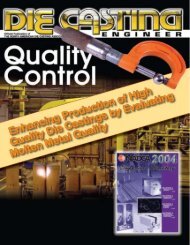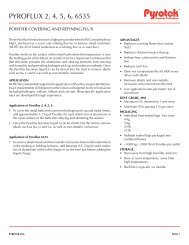Bonded Particle Filter - Pyrotek
Bonded Particle Filter - Pyrotek
Bonded Particle Filter - Pyrotek
Create successful ePaper yourself
Turn your PDF publications into a flip-book with our unique Google optimized e-Paper software.
Filtration is especially beneficial in removing ‘hardspots’ (oxide and<br />
sludge inclusions) from net and near-net-shape foundry castings,<br />
resulting in significantly increased machinibility, less tool wear<br />
and less tool breakage! Clearly, gains in product quality, productivity<br />
and profitability make filtration a very necessary and desirable<br />
process for all aluminium casting applications.<br />
2.2 COMMERCIALLY AVAILABLE FILTER MEDIA<br />
Four major types of filters for aluminium are found in the<br />
marketplace. Along with their predominant characteristics, they<br />
are the following:<br />
A. Alumina bed filters<br />
Bed filters are comprised of ‘layers’ of tabular and ball alumina to<br />
create ‘depth’ as the metal flows between the ‘balls’ and flakes.<br />
The porosity of the bed is not fixed, however, so channelling of the<br />
aluminium flow can occur, either spontaneously through surge<br />
flow, or inadvertently through mechanical disturbances. This can<br />
lead to dumping of already-trapped inclusions and discharge of<br />
unfiltered metal. While deep-bed filters are usually large and fairly<br />
costly, they do provide excellent filtration if the life is not over-<br />
extended.<br />
B. Ceramic foam filters<br />
Ceramic foam filters are bonded or sintered alumina with<br />
porosity controlled during manufacture to provide a gradation<br />
of pore sizes 20 or 30 ppi, or grades 40, 50, 60, 65 and 80. With<br />
high average porosity (80-85%), fairly rapid metal flow rates can be<br />
achieved, but at the expense of filtration efficiency. With such high<br />
porosity, mechanical strength is relatively low, and handling<br />
damage or break-up may occur during melt flow. Providing the<br />
proper filter grade/flow relationship is maintained for an initial<br />
metal cleanliness, ceramic foam filters are low-cost and find their<br />
best application as a single-use (single-cast) application in the<br />
casthouse or foundry.<br />
C. <strong>Bonded</strong> ceramic particles<br />
This is the type of filter supplied by Metaullics - a bonded granular<br />
ceramic media, fabricated either from aluminium oxide or silicon<br />
carbide. The proprietary bonding agent employed is both strong<br />
and resistant to chemical attack by molten aluminium.<br />
Substantially lower porosity (nominally 40%) and the inherent<br />
properties of the hard alumina or silicon carbide granules<br />
provides a much stonger filter structure which aids in handling<br />
and durability. Especially with silicon carbide construction, thermal<br />
conductivity is substantially higher which aids in preheat and in<br />
thermal transfer. The complex, fully-interconnected internal pore<br />
structure provides a ‘tortuous path’ for metal flow. The bonding<br />
agent also has a particular affinity for inclusions. This combination<br />
of lower porosity, tortuous flow path and binder chemistry allows<br />
the Metaullics bonded particle filter to exhibit the best balance<br />
between cake-mode and depth-mode filtration.





